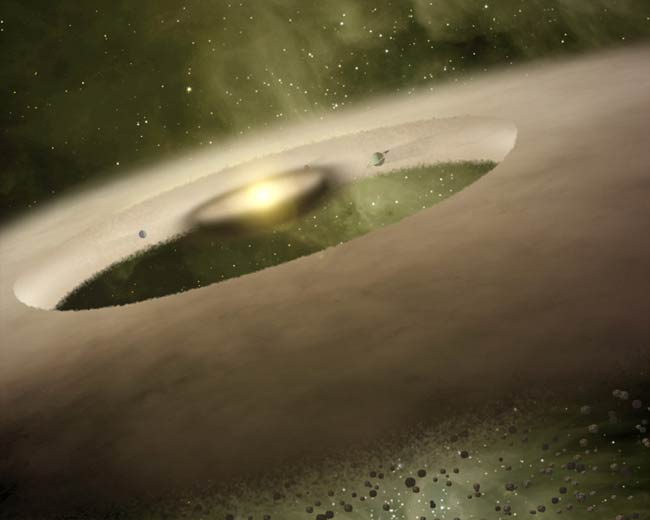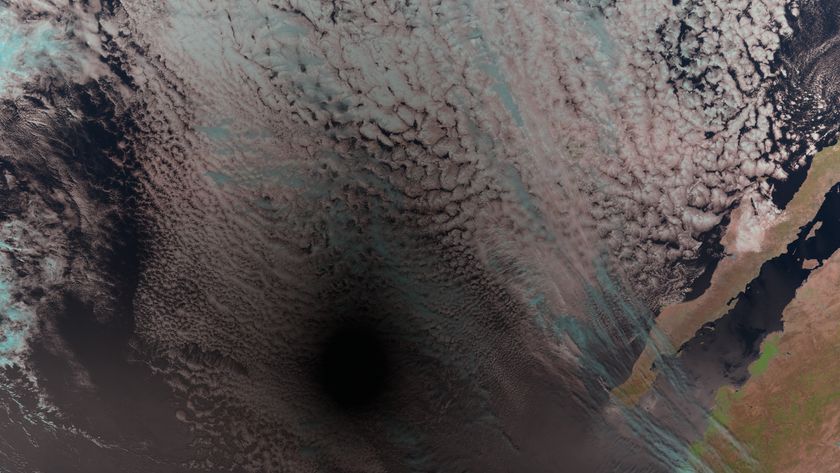Birth of Baby Planets Spotted Around Distant Star

Astronomers have detected dust grains glomming together around a faraway star, capturing a snapshot of what appear to be newly forming alien planets caught in the act of being born.
Scientists used the Subaru Telescope in Hawaii to image the disk of dust and gas surrounding UX Tauri A, a young star found about 450 light-years from Earth in the constellation Taurus (The Bull). Analysis of the image revealed large and non-spherical dust particles — a telltale sign that grains are adhering to each other in a process that will eventually lead to planet formation, researchers said.
UX Tauri A is a sun-like star about 1 million years old, and it's part of a binary star system. Back in 2007, NASA's Spitzer Space Telescope discovered a gap in the protoplanetary disk surrounding UX Tauri A, suggesting that one or more planets may be taking shape there.
This gap is huge, extending from 0.2 to 56 astronomical units from UX Tauri A (1 astronomical unit is the distance from Earth to the sun, or about 93 million miles). If this gap were transported to our solar system, it would range from Mercury to Pluto, researchers have said.

The new results suggest that planets are indeed forming around UX Tauri A, despite the star's youth.
The team looked closely at UX Tauri A in near-infrared wavelengths, measuring how the disk's dust particles scatter and reflect light. They determined that the particles are about 30 microns wide — 300 times bigger than the motes floating through interstellar space that seed protoplanetary disks to begin with.
"Only particles with a non-spherical shape and a size of 30 microns, which is much larger than the near-infrared wavelength that was used for the observation, can explain the features of our observation," study co-author Yoichi Itoh, of the University of Hyogo in Japan, said in a statement.
Get the Space.com Newsletter
Breaking space news, the latest updates on rocket launches, skywatching events and more!
The study will be published in the Publications of the Astronomical Observatory of Japan in December.
Follow SPACE.com on Twitter @Spacedotcom. We're also on Facebook & Google+.
Join our Space Forums to keep talking space on the latest missions, night sky and more! And if you have a news tip, correction or comment, let us know at: community@space.com.

Space.com is the premier source of space exploration, innovation and astronomy news, chronicling (and celebrating) humanity's ongoing expansion across the final frontier. Originally founded in 1999, Space.com is, and always has been, the passion of writers and editors who are space fans and also trained journalists. Our current news team consists of Editor-in-Chief Tariq Malik; Editor Hanneke Weitering, Senior Space Writer Mike Wall; Senior Writer Meghan Bartels; Senior Writer Chelsea Gohd, Senior Writer Tereza Pultarova and Staff Writer Alexander Cox, focusing on e-commerce. Senior Producer Steve Spaleta oversees our space videos, with Diana Whitcroft as our Social Media Editor.









